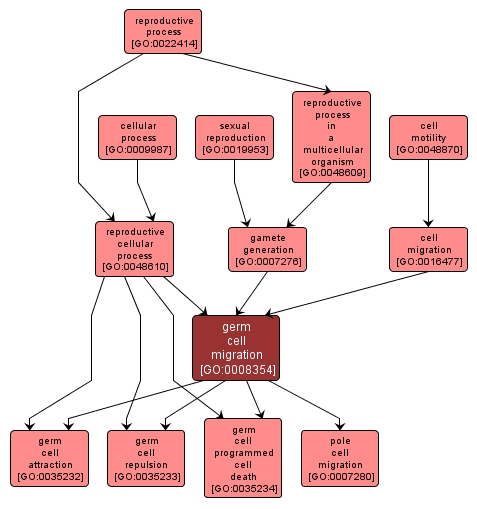GO TERM SUMMARY
|
| Name: |
germ cell migration |
| Acc: |
GO:0008354 |
| Aspect: |
Biological Process |
| Desc: |
The orderly movement of a cell specialized to produce haploid gametes through the embryo from its site of production to the place where the gonads will form. |
Synonyms:
- germ-cell migration
- primordial germ cell migration
|
|

|
INTERACTIVE GO GRAPH
|














